|
Energy

Energy comes in different forms
- Heat (thermal)
- Light (radiant)
- Motion (kinetic)
- Electrical
- Chemical
- Nuclear energy
- Gravitational
Energy is measured in a couple of different ways. One of the basic
measuring blocks is called a Btu. This stands for British Thermal Unit.
BTU is defined as equal to the amount of heat required to raise the
temperature of one pound of water at its maximum density [which occurs
at a temperature of 39.1 degrees Fahrenheit (°F) ] by 1°F, at sea
level.
Measuring Energy
Btu. A British Thermal
Unit is a measure of energy content, usually used to describe the energy content
of fuels. Because a Btu is so small, energy is usually measured in millions of
Btus. For example, a "therm" of natural gas, such as you would find on your gas
bill, is 100,000 Btus of gas.
- 1 Btu = the amount of energy
required to increase the temperature of one pound of water (which is
equivalent to one pint) by one degree Fahrenheit, roughly the heat produced
from burning one match.
- 1,000 Btu = four-fifths of the
energy contained in a peanut butter and jelly sandwich.
- 100,000 Btu = one therm.
Roughly the energy contained in 80 peanut butter and jelly sandwiches.
- 1 million Btu = 1.1 days of US
per capita energy consumption.
- 277 million Btu = US per
capita energy consumption in 1990.
- 1 quadrillion Btu = quad. The
US consumes more than 80 quads annually.
One BTU is approximately equivalent to the following:
BTU Content of Common Energy Units
-
1
gallon of gasoline = 124,000 Btu
-
1
gallon of diesel fuel = 139,000 Btu
-
1
gallon of heating oil = 139,000 Btu
-
1
barrel(42 gallons) of crude oil = 5,800,000 Btu
-
1
barrel of residual fuel oil = 6,287,000 Btu
-
1
cubic foot of natural gas = 1,031 Btu
-
1
gallon of propane = 91,000 Btu
-
1
short ton of coal = 20,754,000 Btu
-
1
kilowatthour of electricity = 3,412 Btu
|
Conversion Table of Common Energy Sources to Btu
|
Energy Source |
Physical Units and Btu Equivalents |
|
Gasoline |
1 gallon = 124,000 Btu |
|
Diesel Fuel |
1 gallon = 139,000 Btu |
|
Heating Oil |
1 gallon = 139,000 Btu |
|
Electricity |
1 kilowatthour (kWh) = 3,412 Btu (but 10,000 Btu to generate the
electricity) |
|
Natural Gas |
1 cubic foot (ft3) = 1,028 Btu
1 cubic foot = 0.01 therms |
|
Energy can also be measured in joules. One joule is the amount of energy
needed to lift one pound about nine inches.
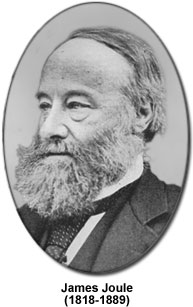
Joules are named after an English physicist named James Prescott Joule
who lived from 1818 to 1889. He discovered that heat is a type of
energy.
1,055 joules = 1 BTU
Matter can be
changed into energy. The famous scientist Albert Einstein created the
mathematical formula that explains this.
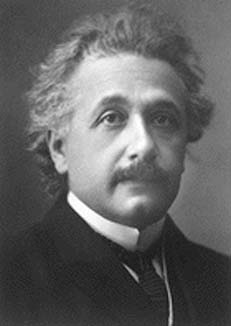
Albert Einstein
It is:

E
= mc2
This equation says:
E
[energy] equals
m
[mass] times
c2 [c
stands for the speed of light.
c2
means c times c, or the speed
of light raised to the second power -- or c-squared.]
"It followed from the special theory of relativity that mass and energy are both
but different manifestations of the same thing -- a somewhat unfamiliar
conception for the average mind. Furthermore, the equation E is equal to m
c-squared, in which energy is put equal to mass, multiplied by the square of the
velocity of light, showed that very small amounts of mass may be converted into
a very large amount of energy and vice versa. The mass and energy were in fact
equivalent, according to the formula mentioned above. This was demonstrated by
Cockcroft and Walton in 1932, experimentally."
Energy Units
1 J (joule) = 1 Ws = 4.1868 cal
1 GJ (gigajoule) = 109 J
1 TJ (terajoule) = 1012 J
1 PJ (petajoule) = 1015 J
1 kWh (kilowatt hour) = 3,600,000 Joule
1 toe (tonne oil equivalent)
= 7.4 barrels of crude oil in primary energy
= 7.8 barrels in total final consumption
= 1270 m3 of natural gas
= 2.3 metric tonnes of coal
1 Mtoe (million tonne oil equivalent) = 41.868 PJ
There are two types
of energy -- stored (potential) energy and working (kinetic) energy. All
forms of energy are stored in different ways, in the energy sources that
we use every day.
KINETIC ENERGY
Kinetic energy is
motion––of waves, electrons, atoms, molecules, substances, and objects. |
POTENTIAL ENERGY
Potential energy is
stored energy and the energy of position––gravitational energy. There are
several forms of potential energy. |
Electrical Energy
is the movement of electrical charges. Everything is made of tiny
particles called atoms. Atoms are made of even smaller particles called
electrons, protons, and neutrons. Applying a force can make some of the
electrons move. Electrical charges moving through a wire is called
electricity. Lightning is another example of electrical energy.
Radiant Energy is
electromagnetic energy that travels in transverse waves. Radiant energy
includes visible light, x-rays, gamma rays and radio waves. Light is one
type of radiant energy. Solar energy is an example of radiant energy.
Thermal Energy, or
heat, is the internal energy in substances––the vibration and movement
of the atoms and molecules within substances. Geothermal energy is an
example of thermal energy.
Motion Energy is
the movement of objects and substances from one place to another.
Objects and substances move when a force is applied according to
Newton’s Laws of Motion. Wind is an example of motion energy.
Sound is the movement of
energy through substances in longitudinal (compression/rarefaction)
waves. Sound is produced when a force causes an object or substance to
vibrate––the energy is transferred through the substance in a wave.
|
Chemical Energy
is energy stored in the bonds of atoms and molecules. It is the energy
that holds these particles together. Biomass, petroleum, natural gas,
and propane are examples of stored chemical energy.
Stored Mechanical
Energy is energy stored in objects by the application of a force.
Compressed springs and stretched rubber bands are examples of stored
mechanical energy.
Nuclear Energy is
energy stored in the nucleus of an atom––the energy that holds the
nucleus together. The energy can be released when the nuclei are
combined or split apart. Nuclear power plants split the nuclei of
uranium atoms in a process called fission. The sun combines the
nuclei of hydrogen atoms in a process called fusion. Scientists
are working on creating fusion energy on earth, so that someday there
might be fusion power plants.
Gravitational Energy
is the energy of position or place. A rock resting at the top of a hill
contains gravitational potential energy. Hydropower, such as water in a
reservoir behind a dam, is an example of gravitational potential energy.
|
These sources are divided into two groups
-renewable(an energy source that we can use over and over again)
-nonrenewable(an energy source that we are using up and cannot recreate
in a short period of time)
Renewable energy sources include solar energy, which comes from the sun
and can be turned into electricity and heat. Wind, geothermal energy
from inside the earth, biomass from plants, and hydropower from water
are also renewable energy sources.
However, we get most of our energy from nonrenewable energy sources,
which include the fossil fuels--oil, natural gas, and coal. They're
called fossil fuels because they were formed over millions and millions
of years by the action of heat from the Earth's core and pressure from
rock and soil on the remains (or "fossils") of dead plants and animals.
Another nonrenewable energy source is the element uranium, whose atoms
we split (through a process called nuclear fission) to create heat and
ultimately electricity.
History of
Energy
From wood to coal to fossil
fuels - our use of energy has changed a lot over the years. Today, most
modern households need energy not only for heat and lights, but also for
multiple cars, televisions, computers, and other modern luxuries.




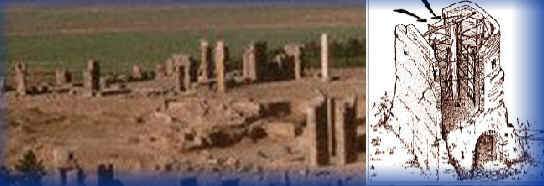

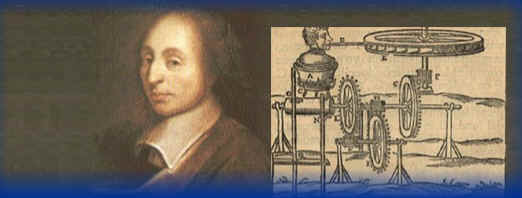

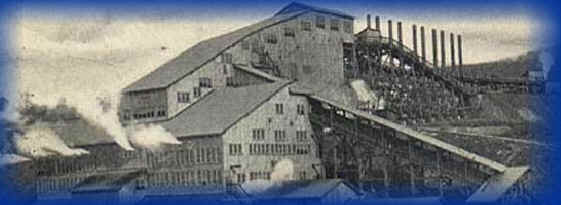



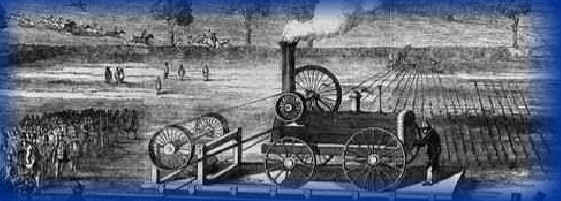

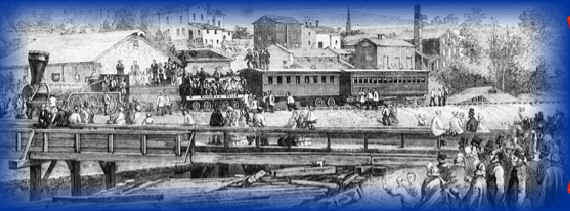









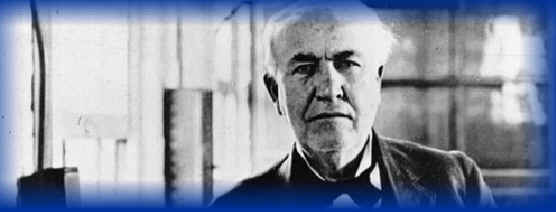









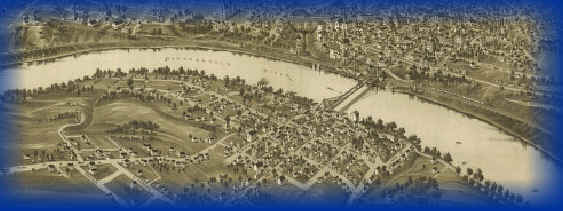

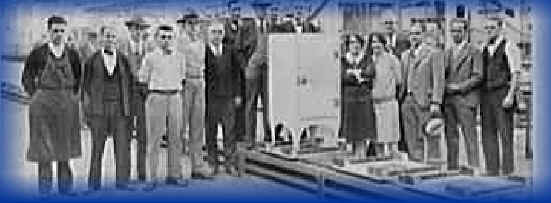

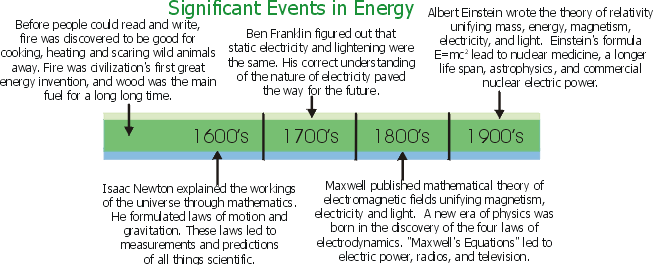
|
Wood
(Biomass)
|
|
|
Pre-1885 |

Wood was the primary source for cooking, warmth, light, trains and
steamboats. Cutting wood was time consuming, hard work.
|
|
Electricity
|
|
|
1700's |
After eons
of superstitious imaginations about electricity, Ben Franklin figured out
that static electricity and lightening were the same.

http://www.ushistory.org/franklin/info/kite.htm
His correct understanding of the
nature of electricity paved the way for the future.
|
| |
1830-1839 |
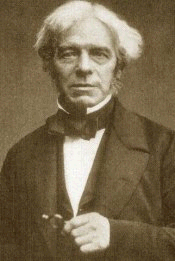
Michael Faraday built an induction dynamo based on principles of
electromagnetism, induction, generation and transmission.

Faraday’s electro-magnetic induction ring
|
| |
1860’s |
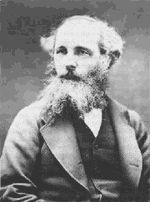
Mathematical theory of
electromagnetic fields was published. James Clerk Maxwell created a new
era of physics when he unified magnetism, electricity and light. One of
the most significant events, possibly the very most significant event,
of the 19th century was Maxwell's discovery of the four laws of
electrodynamics ("Maxwell's Equations"). This led to electric power,
radios, and television.
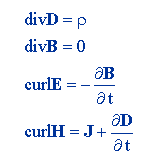
|
|
|
|
|
1763-1774 |
Pumping water from coal mines was a most difficult and expensive
problem.
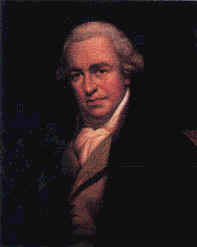
The steam engine developed by James Watt during these years provided the
solution.
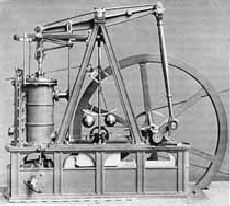
Watt's steam engine remained basically unchanged for the next century
and its uses expanded to change the whole nature of industry and
transportation.
|
|
|
|
|
| |
1885-1950 |
Coal was the most important fuel. One half ton of coal produced as much
energy as 2 tons of wood and at half the cost. But it was hard to stay
clean in houses heated with coal. |
|
|
|
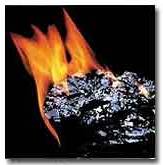
|
| |
Late 1860’s |
The steel industry gave coal a big boost. |
|
|
|
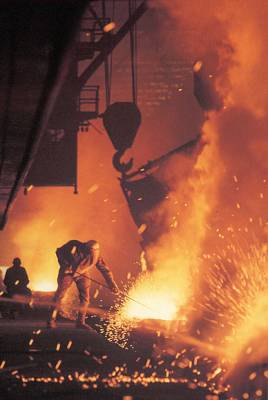
|
| |
1982 |
Coal accounted for more than half of the supply of electricity but little
was used in homes. In terms of national electricity generation,
hydropower, natural gas, and nuclear energy contributed between 10 and 15
percent each. |
|
Oil
|
|
|
By 1870 |
Oil had become the country’s second biggest export after the industry was
started by Edwin Drake. |
|
|
|
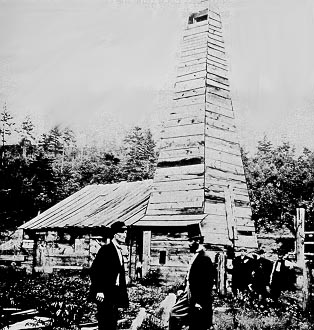
|
| |
1890 |
Mass production of automobiles began, creating demand for gasoline. Prior
to this, kerosene used for lighting had been the main oil product. |
|
|
|
|
| |
1951-present |
Oil has given us most of our energy. Automobiles increased the demand for
oil. |
|
|
|

|
| |
1960 |
The Organization of Petroleum Exporting Countries (OPEC) was formed by
Iran, Iraq, Kuwait, Saudi Arabia, and Venezuela. The group has since grown
to include 11 member countries. |
|
|
|
|
| |
1970 |
U.S. production of petroleum (crude oil and natural gas plant liquids)
reached its highest level at 11.7 million barrels per day. Production in
the Lower-48 States has been generally declining since 1970. Some of this
decline has been offset by increased Alaskan production after 1978. |
|
|
|
|
| |
1993 forward |
For the first time the U.S. imported more oil and refined products from
other countries than it produced. More and more imports have been needed
because of growing petroleum demand and declining U.S. production |
|
Nuclear
|
|
|
1906 |
Special theory of relativity written. Albert Einstein created a new era of
physics when he unified mass, energy, magnetism, electricity, and light.
One of the most significant events, if not the very most significant
event, of the 20th century was Einstein's writing the formula of E=mc2:
energy = mass times the square of the speed of light. This led to nuclear
medicine - and a much longer life span, astrophysics, and commercial
nuclear electric power |
|
|
|
|
| |
1942 |
Scientists produced nuclear energy in a sustained nuclear reaction. |
|
|
|
|
| |
1957 |
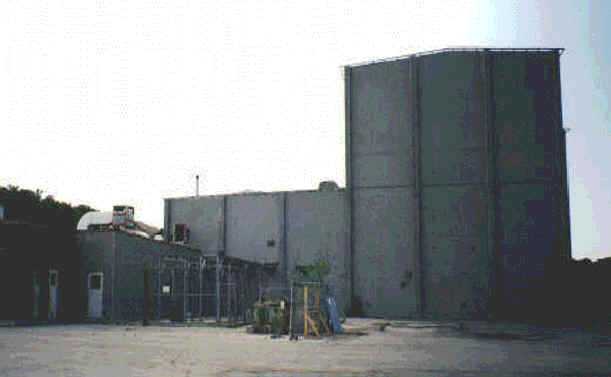
The Former Sodium Reactor Experiment Containment Building
First power generated from a civilian nuclear plant at Santa Susana,
California.
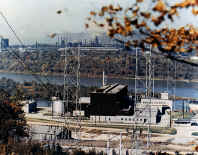
First full-scale nuclear power plant (Shippingport, Pennsylvania) began
service.
The International Atomic
Energy Agency (IAEA) was formed with 18 member countries to promote
peaceful uses of nuclear energy and to prevent the spread of nuclear
weapons.
|
| |
1959 |
First U.S. plant (Dresden-1 Nuclear Power Station in Illinois) built
entirely without government funding, achieved a self-sustaining nuclear
reaction |
|
|
|
|
| |
1979
|
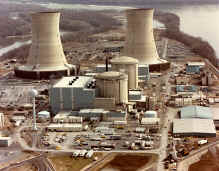
An accident occurs at the Three Mile Island nuclear power plant |
| |
|
|
| |
1986
|
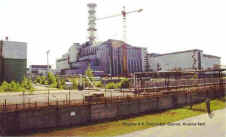
A Soviet nuclear accident occurs at Chernobyl Reactor #4 |
| |
|
|
| |
1995 |
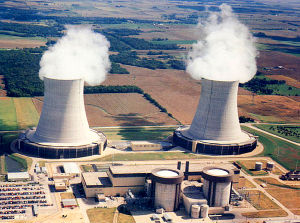
Nuclear power contributed about 20
percent of the nation's electricity.
|
Energy Glossary
|
Amp
Short for "ampere" - this measures the amount of electricity moving
through a wire. Most household appliances use 15 or 20 amps of power.
Amps are what give electricity its "shock."
Volt
Volts or voltage, is the pressure that pushes the electricity through
the wires. This is how electricity gets from the power plant to your
house: high-voltage transmission lines carry the electricity under
greater pressure to carry it long distances, while lower-voltage power
lines serve individual homes and businesses.
Watt
Watts, or wattage, is how electric use is measured - the amount of power
a device consumes. Wattage is equal to the amperage multiplied by the
voltage (amps X volts = watts).
Kilowatt
A kilowatt (kW) is equal to 1,000 watts. This is how electric companies
measure how much electricity your family uses at home. Most homes use
about 10,000 kilowatts each year.
Kilowatt-hour
A kilowatt-hour (kWh) is the unit of energy equal to that expended by
one kilowatt in one hour.
Megawatt
A megawatt (MW) is one million watts. A large-scale power plant produces
more than 500 MW a year.
Btu
This is an abbreviation for British thermal unit - the amount of heat
needed to raise the temperature of one pound of water by one degree. The
heat output of a natural gas flame is measured in Btus.
Therms
A therm is equal to 100,000 Btus - this is how utility companies measure
how much natural gas your family uses.
|
source: US Department of Energy, EIA,
Union of Concerned Scientist
|






























































